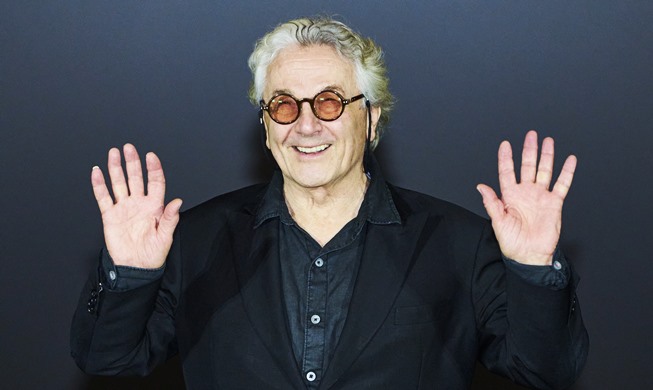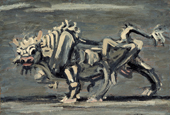-
 Korea.net's 24-hour YouTube channel
Korea.net's 24-hour YouTube channel- NEWS FOCUS
- ABOUT KOREA
- EVENTS
- RESOURCES
- GOVERNMENT
- ABOUT US
One hundred and seventeen years ago, King Gojong (r. 1863-1907) of Joseon rechristened the nation as the Daehan Empire in 1897 and ruled as an emperor until the end of his reign. The king, then emperor, built a Western-style stone palace, the Seokjojeon, inside the Deoksugung Palace grounds, from which he ruled the empire.
The building was designed in 1898 by John Reginald Harding (1858-1921), a British architect. Construction began in 1900 and continued for 10 years. The building was originally built for residential purposes and had a reception room, bedrooms, living rooms and bathrooms. However, it was mostly used as a banquet hall. It was also used as a residence for the last crown prince of Korea, King Yeongchin (1897-1970), the seventh son of Gojong.
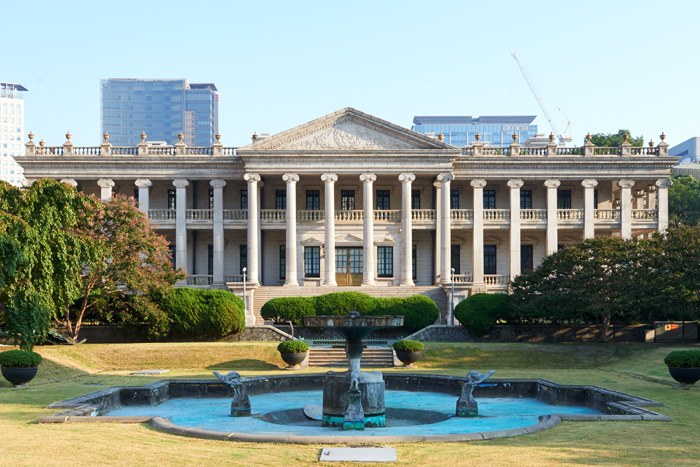
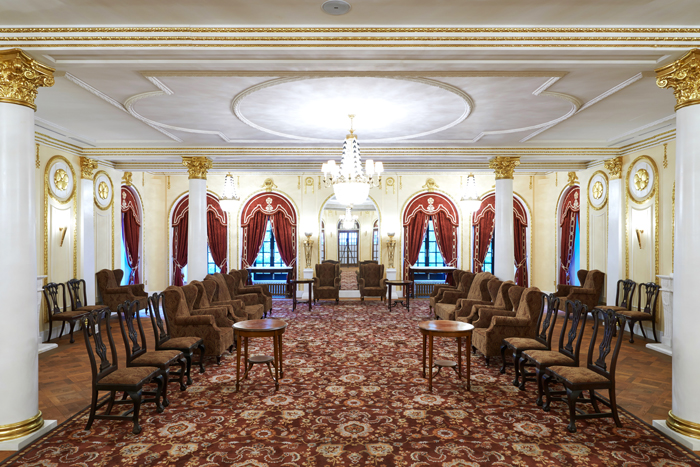
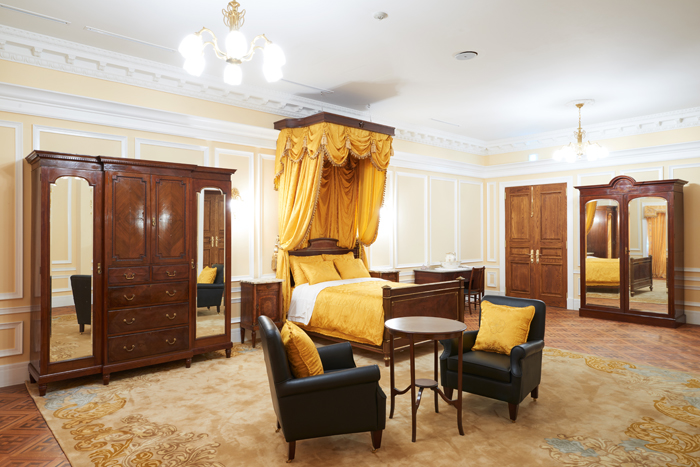
The good times did not last long for the Seokjojeon, however. The building was completed in 1910, but the Daehan Empire disappeared from history with the formalization that year of Japan's total occupation of the Korean Peninsula. Under colonization, the building was used as a royal museum and as a museum for the Joseon era's ruling Yi Dynasty. The interior gilt decoration was damaged and the chimney was demolished.
After Korea gained independence in 1945, a U.S.-USSR joint commission was housed here. During the Korean War (1950-1953), bombing and arson by North Korean forces completely destroyed the interior.
In 1954, the military tried to restore the building to its original form, but it later became the national museum in 1955. Then it housed the national contemporary art museum in 1973, an exhibition hall for royal artifacts in 1992 and the offices for Deoksung Palace in 2005. In the end, it was impossible to trace the original interior decorations.
The building has now been reborn as the Daehan Empire Historical Museum. According to the Cultural Heritage Administration (CHA), the museum will open to the public on October 13 after five years of renovation. The Daehan Empire was declared on October 13, 1897, and the same date was chosen for this museum's opening.
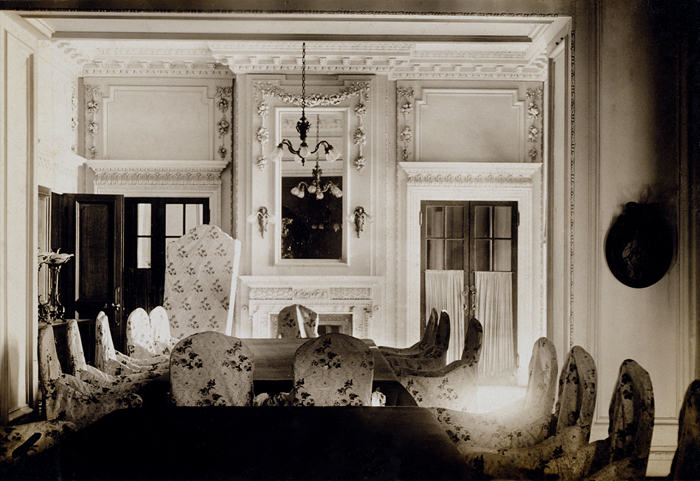
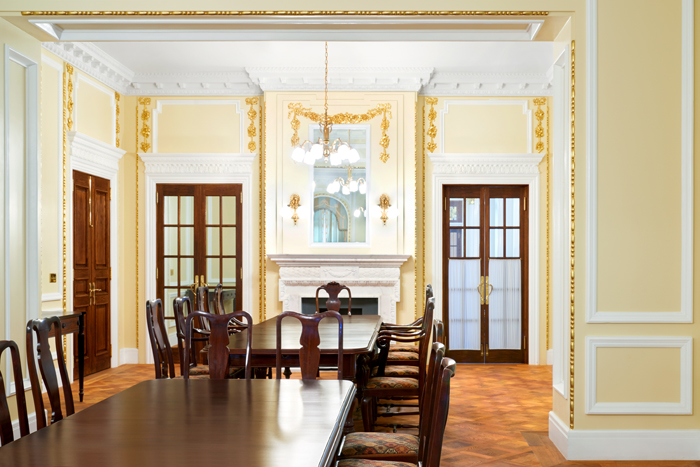
The restoration of the Seokjojeon is based on the original blueprints of the building, old photographs, newspaper articles and related information on stone architecture existing in Britain and Japan. The CHA sought advice from specialists in early 20th century architecture and history to make sure that the building was restored to its original form.
Most of the furniture and other belongings in the building, which could only be seen in old photographs, were reproduced by companies worldwide which had originally produced them. The restored central hall, grand dining room and small dining room, for example, are all almost identical to what is seen in the photographs. The building also has exhibition halls that show historical material and video clips to help understand the history of the Daehan Empire and the life of the royal Yi family.
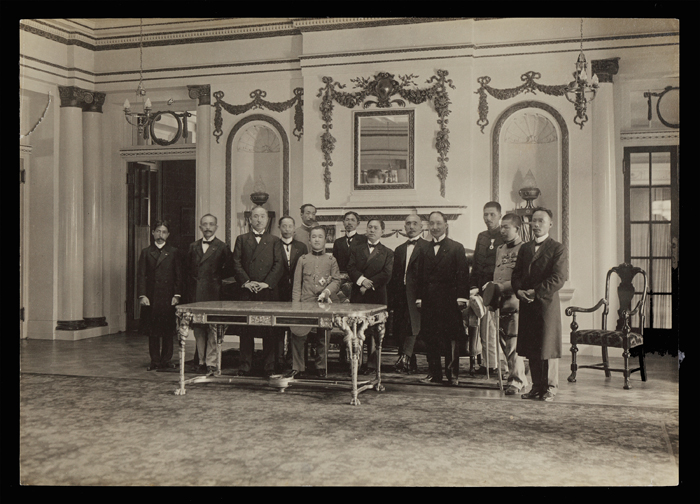
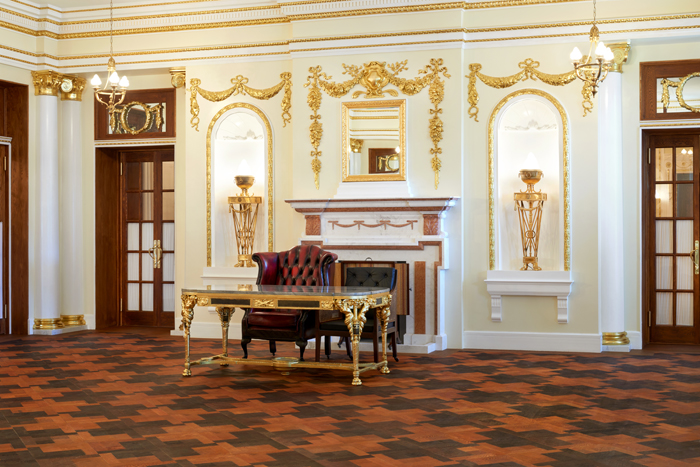
Deoksugung Palace will be open on October 13 to mark the reopening of the Seokjojeon, though it is normally closed on Mondays.
A reservation to see the museum can be made at the Deoksugung Palace homepage (www.deoksugung.go.kr). Visitors will be able to see the building for free as long as they pay the entrance fee of KRW 1,000 for the palace grounds.
By Limb Jae-un
Korea.net Staff Writer
Photos courtesy of the CHA
jun2@korea.kr

The building was designed in 1898 by John Reginald Harding (1858-1921), a British architect. Construction began in 1900 and continued for 10 years. The building was originally built for residential purposes and had a reception room, bedrooms, living rooms and bathrooms. However, it was mostly used as a banquet hall. It was also used as a residence for the last crown prince of Korea, King Yeongchin (1897-1970), the seventh son of Gojong.



(From top) The Seokjojeon at Deoksugung Palace is restored after five years of renovation. There is a reception room on the first floor and the king's bedroom is on the second floor.
The good times did not last long for the Seokjojeon, however. The building was completed in 1910, but the Daehan Empire disappeared from history with the formalization that year of Japan's total occupation of the Korean Peninsula. Under colonization, the building was used as a royal museum and as a museum for the Joseon era's ruling Yi Dynasty. The interior gilt decoration was damaged and the chimney was demolished.
After Korea gained independence in 1945, a U.S.-USSR joint commission was housed here. During the Korean War (1950-1953), bombing and arson by North Korean forces completely destroyed the interior.
In 1954, the military tried to restore the building to its original form, but it later became the national museum in 1955. Then it housed the national contemporary art museum in 1973, an exhibition hall for royal artifacts in 1992 and the offices for Deoksung Palace in 2005. In the end, it was impossible to trace the original interior decorations.
The building has now been reborn as the Daehan Empire Historical Museum. According to the Cultural Heritage Administration (CHA), the museum will open to the public on October 13 after five years of renovation. The Daehan Empire was declared on October 13, 1897, and the same date was chosen for this museum's opening.


(Top) The grand dining room on the first floor is shown in a picture taken in 1918. (Bottom) The grand dining room after restoration.
The restoration of the Seokjojeon is based on the original blueprints of the building, old photographs, newspaper articles and related information on stone architecture existing in Britain and Japan. The CHA sought advice from specialists in early 20th century architecture and history to make sure that the building was restored to its original form.
Most of the furniture and other belongings in the building, which could only be seen in old photographs, were reproduced by companies worldwide which had originally produced them. The restored central hall, grand dining room and small dining room, for example, are all almost identical to what is seen in the photographs. The building also has exhibition halls that show historical material and video clips to help understand the history of the Daehan Empire and the life of the royal Yi family.


(Top) The central hall on the first floor is shown in a picture taken in 1911. The last crown prince of Korea, King Yeongchin (middle), is surrounded by his staff. (Bottom) The central hall after restoration.
Deoksugung Palace will be open on October 13 to mark the reopening of the Seokjojeon, though it is normally closed on Mondays.
A reservation to see the museum can be made at the Deoksugung Palace homepage (www.deoksugung.go.kr). Visitors will be able to see the building for free as long as they pay the entrance fee of KRW 1,000 for the palace grounds.
By Limb Jae-un
Korea.net Staff Writer
Photos courtesy of the CHA
jun2@korea.kr
Related Contents
Most popular
- First hearing-impaired K-pop act hopes for 'barrier-free world'
- 'Mad Max' director impressed by 'cinema-literate' Korean viewers
- Romanian presidential couple visits national cemetery
- 'Korean mythology is just as wonderful as Greek and Roman'
- President Yoon, Japan PM pledge better trilateral ties with US




